Pierre Reymond: The Alchemist of Limoges
Pierre Reymond was born around 1523 in Limoges, France, where he was twice appointed consul of the city (in 1560 and again in 1567).
Limoges and the surrounding province of Haute-Vienne was known for its enamelwork, and Reymond was a contemporary of the enamalist Léonard Limosin (1505-1577). In the sixteenth century he expanded his metalworking premises to produce decorated tableware, usually of copper enamelled with stylised mythological and biblical scenes.
For much of his life, Pierre Reymond painted his enamels in the "grisaille” method, which used grey monochrome to imitate the appearance of three-dimensional classical sculpture. He also painted with gold, or a distinctive salmon-pink created by a thin wash of red enamel. His most fashionable sets were copper calendar plates with gold gilding. All photos shown are from Pinterest unless stated otherwise.
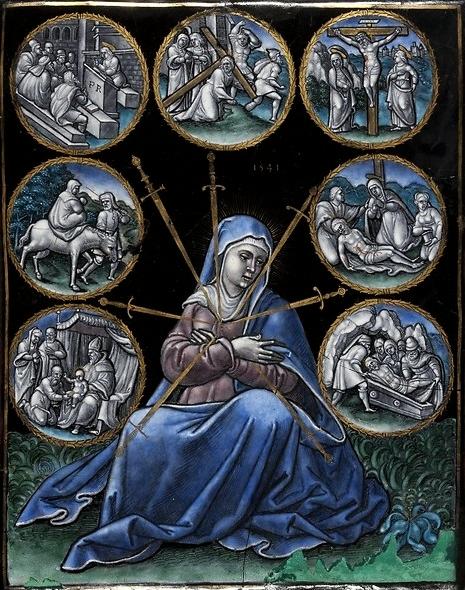
This is a plate dedicated to 'Our Lady of the Seven Sorrows' by Reymond in 1541. Mary's seven sorrows as shown are: Simeon's Prophecy that her son would die young; her family's "Flight to Egypt" escaping the slaughter of the Holy Innocents; Jesus going missing at the Temple as a young boy; seeing Jesus on the Via Dolorosa;. his crucifixion, being taken down from the cross and his burial.
Ewar (1558). Jug or a Holy Grail?
This copper jug ("ewar") is particularly interesting and tells us much about Reymond's beliefs and motivation. It is dated to 1558 and painted in grisaille on black ground, with details painted in gold. It was made in two sections with a raised band. The shoulder is decorated with three quotations from Isaiah, chapter 58. The theme of the ten chapters 56 - 66 is referred to as "Trito-Isaiah" due to its likely separate authorship.
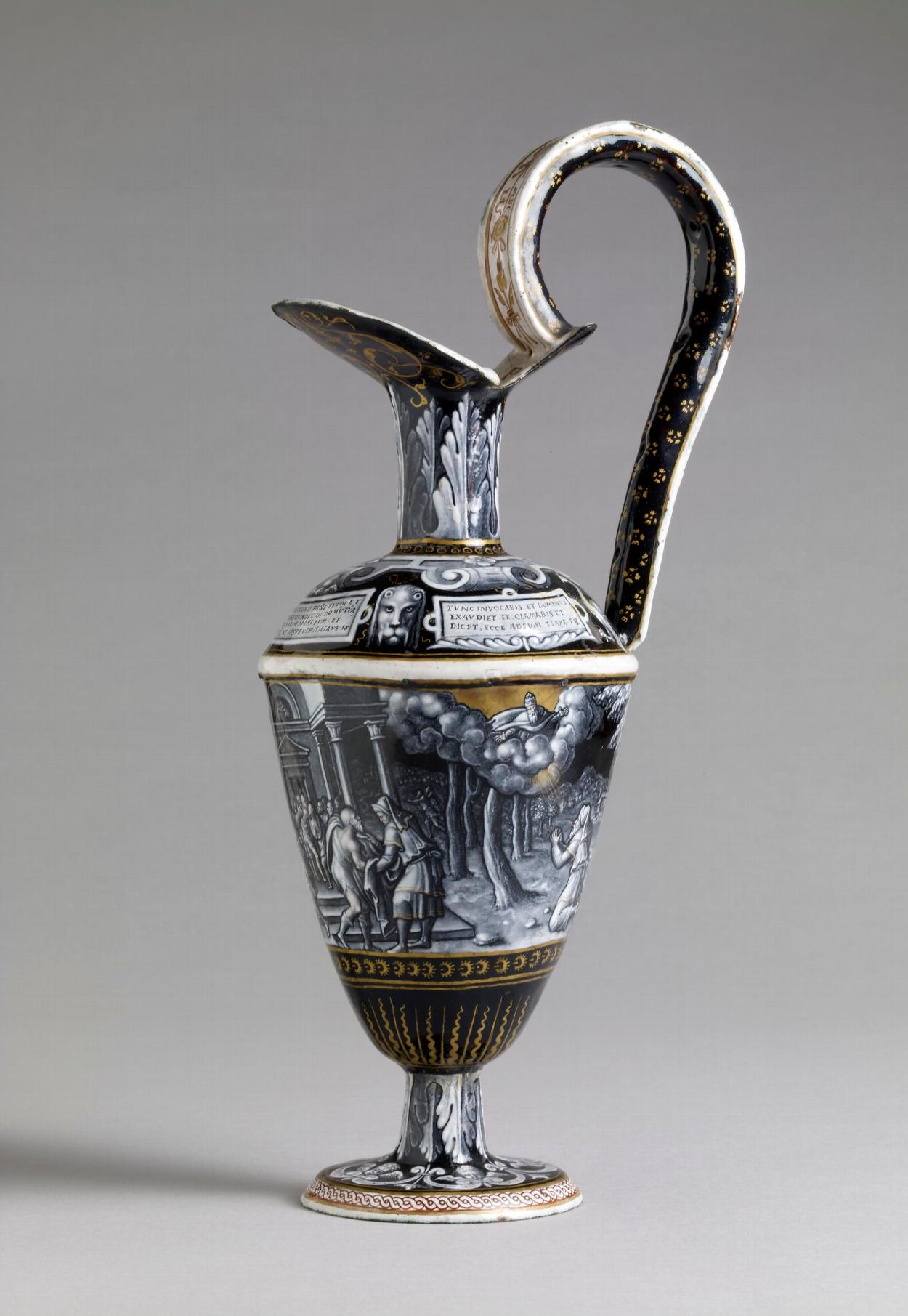
Isaiah chapter 58 contains a proclamation by the prophet concerning how fasting should be conducted in order to please God. Fasting in Judaism is a total cessation of all food and drink. A full-day fast begins at sunset and ends at dawn. Therefore, it is a ritualised passage from darkness into light, itself a metaphor for gnosis or the development of spiritual knowledge. Even a 'minor' fast undertaken on the same day in Judaism begins at dawn and concludes with darkness.
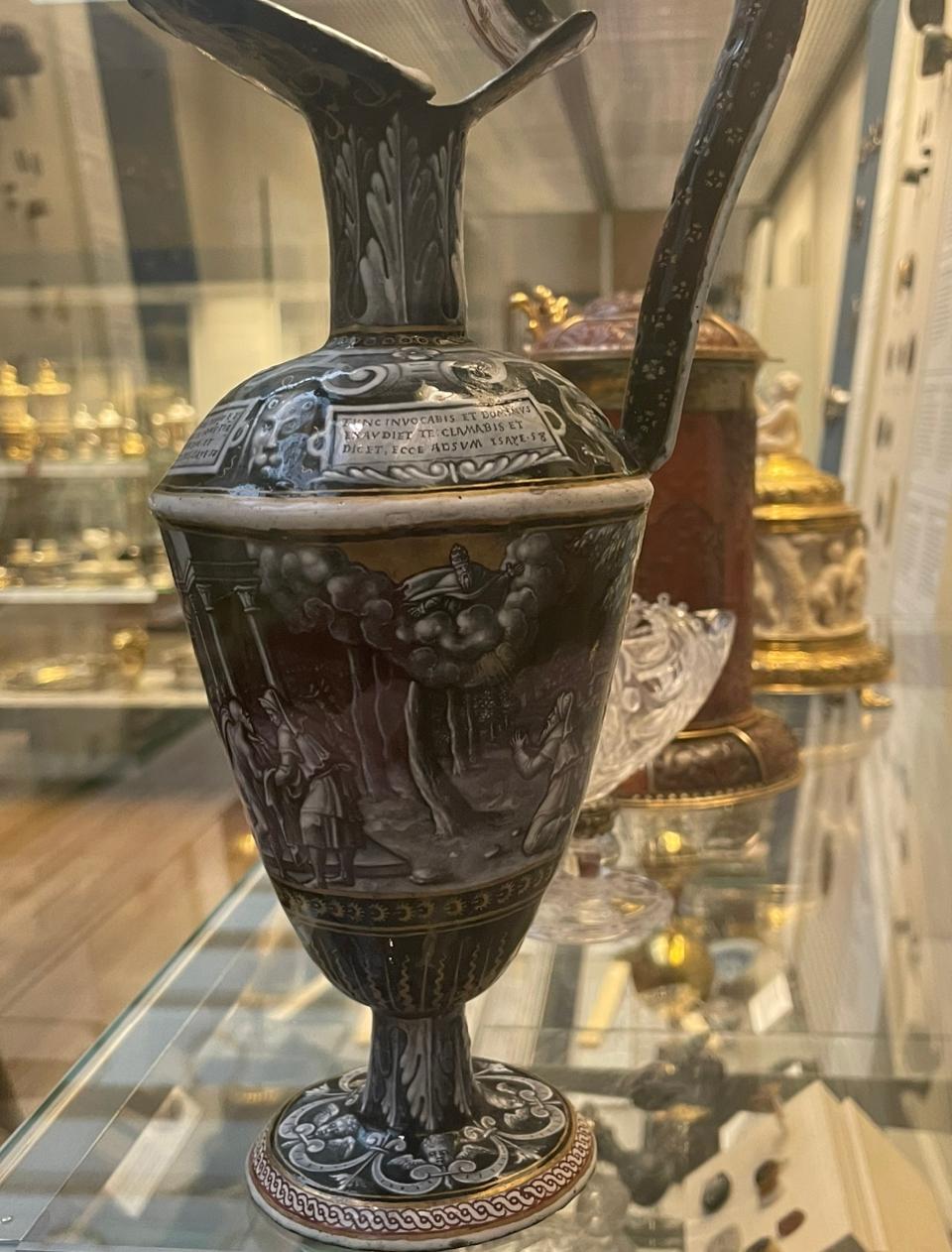
The three verses on the shoulder are in Latin:
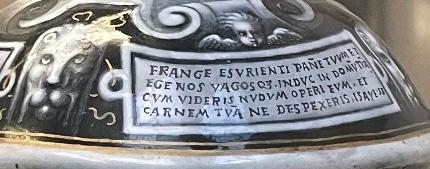
“FRANGE ESURIENTI PANE TUUM ET EGE NOS VAGOS OZ. INDUC IN DOMUTIA CUM VIDERIS NUDUM OPERI EUM ET CARNEUM TUE NE DESPEXERIS”
“Share your food with the hungry and provide the poor wanderer with shelter. when you see the naked, clothe them and do not despise your flesh.” (Is. 58:7)
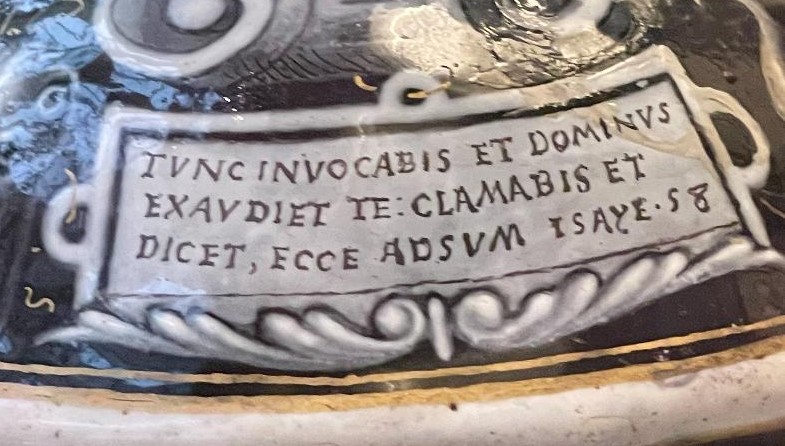
“TUNC INVOCABIS ET DOMINUS EXAUDIET TE CLAMABIS ET DICES, ECCE, ADSUM”
“Then you will call, and the Lord will answer; you will cry for help, and he will say: Here am I.” (Is. 57:9)
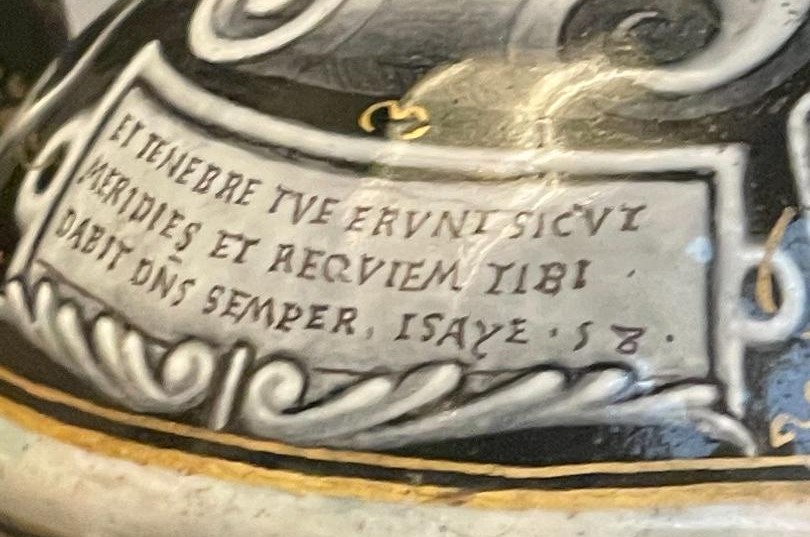
“ET TENEBRE TUE ERUNT SICUT MERIDIES ETREQUIEM TIBI DABIT DNS SEMPER”
“Then your light will rise in the darkness and your night will become like the noonday.” (Is. 58:19)
It follows that fasting is a moral imperative if accompanied by commensurate works. This is a two-fold junction or meeting of ritualised piety and charity, reflected perhaps in the dual sections used in the construction of the jug itself. The intended meaning of the piece is a symbol of something that is not only full and empty at the same time (opposites) but which is always full of God's grace. It is therefore a tripartite symbol, reminiscent of the Kabbalistic vessel of the human form said to contain the Divine Spirit (our body, mind and soul). Indeed, there is a deeper meaning still. Reymond is pointing beyond fasting to the parting of the Red Sea as an allegory of God's mercy shown to his chosen people.
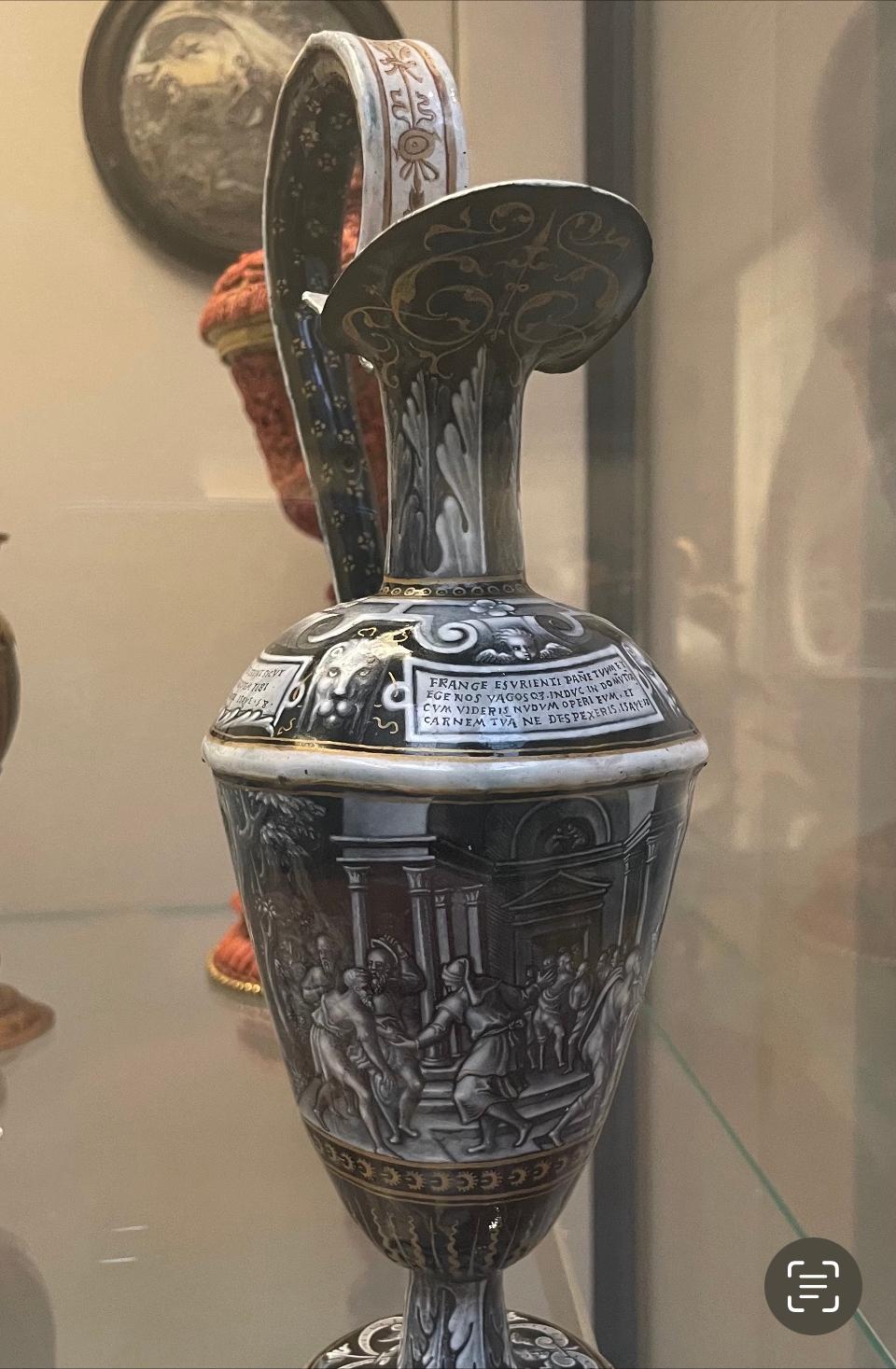
The Hebrews safely crossed the dry sea bed pursued by pharaoh's army, who drowned. The position of the Hebrews was that of a people in captivity, poverty and distress. Their intentions were not entirely driven by a thirst for freedom however but were also directed towards building a relationship with God. This can only be done by the right intention and the right heart. God, for his part, protected the fleeing Hebrews by a pillar ofcloud (water) by day and switched this to a pillar of fire by night. Water and fire are contrasting elements but both symbolise the Spirit and actual Presence of the Divine, which was never absent. Indeed,
the people were punished in the wilderness for forty years for their lack of charity, ill-discipline and selfishness. Fasting, therefore, is a metaphor of the wanderings of Israel, the need for a right heart and God's mercy and permanent presence during it. If we accept the myth of the escape from Egypt, the wanderings in the wastelands and entering the land of Canaan as an allegory of God's justice, mercy and plan for all humanity, then Pierre Reymond's jug is a truly alchemical symbol of this. Forged in copper, enamelled, painted in gold and fashioned in the shape of a vessel, this beautiful work of art is nothing less than a metaphor for the individual salvation of the user. A grail, of sorts.
It is surely no coincidence that he made a jug portraying the Escape from Egypt, and they may have formed a set. Below is an image of that jug.
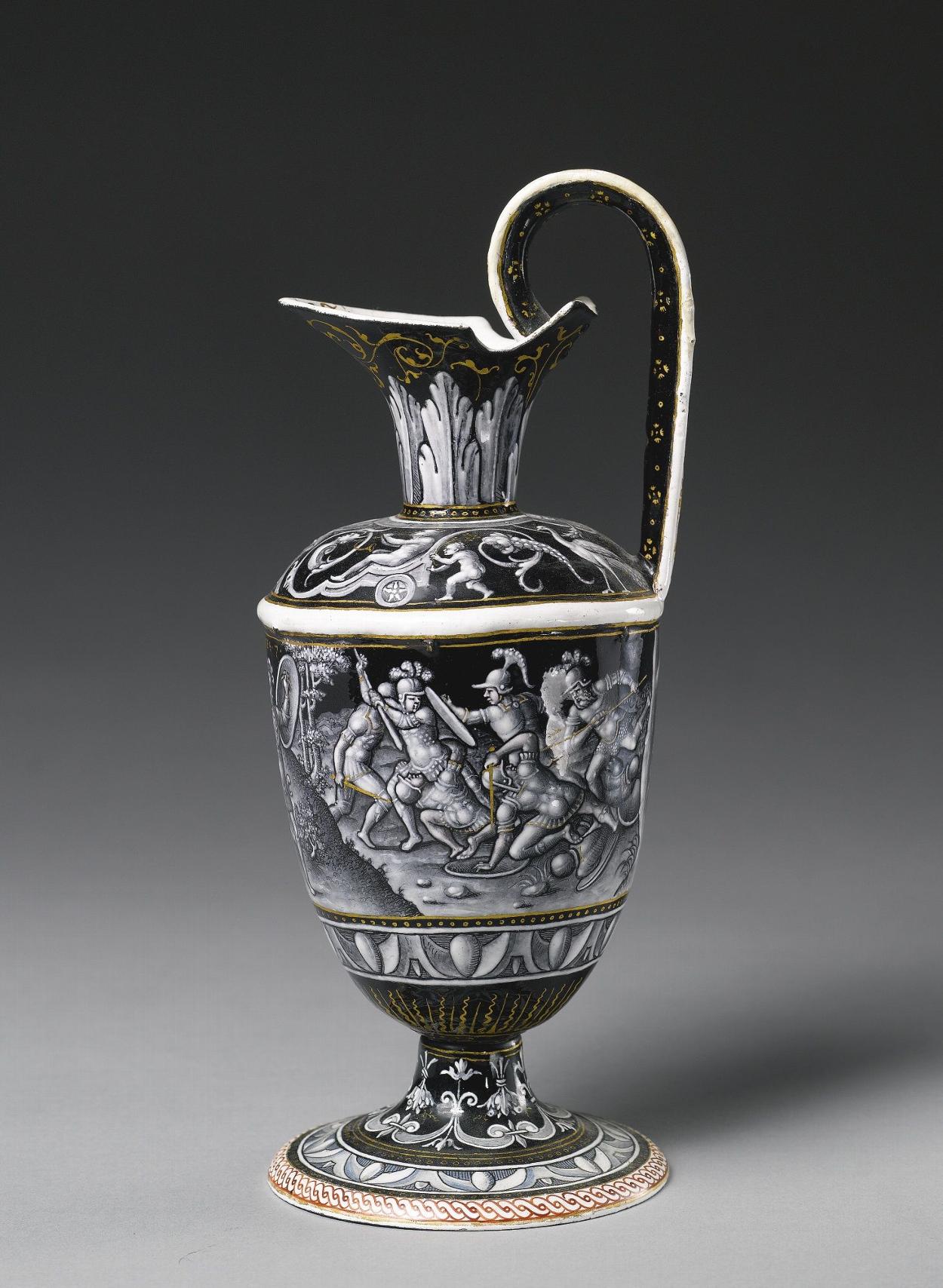 It follows that, in the verses quoted by Reymond, righteousness is rewarded by the blessings of light, good health, protection and revelation. Perhaps it is no coincidence that he made this beautiful metaphor for charity in Isaiah chapter 58 in 1558. A little wink perhaps at those who spend the time to look deeper into its mysteries. Reymond died at Limoges in 1584.
It follows that, in the verses quoted by Reymond, righteousness is rewarded by the blessings of light, good health, protection and revelation. Perhaps it is no coincidence that he made this beautiful metaphor for charity in Isaiah chapter 58 in 1558. A little wink perhaps at those who spend the time to look deeper into its mysteries. Reymond died at Limoges in 1584.
The Reymond Charity Jug is presently being exhibited in Room 46 at the British Museum.
This article is the copyright (c) of M.R. Osborne, 2022






